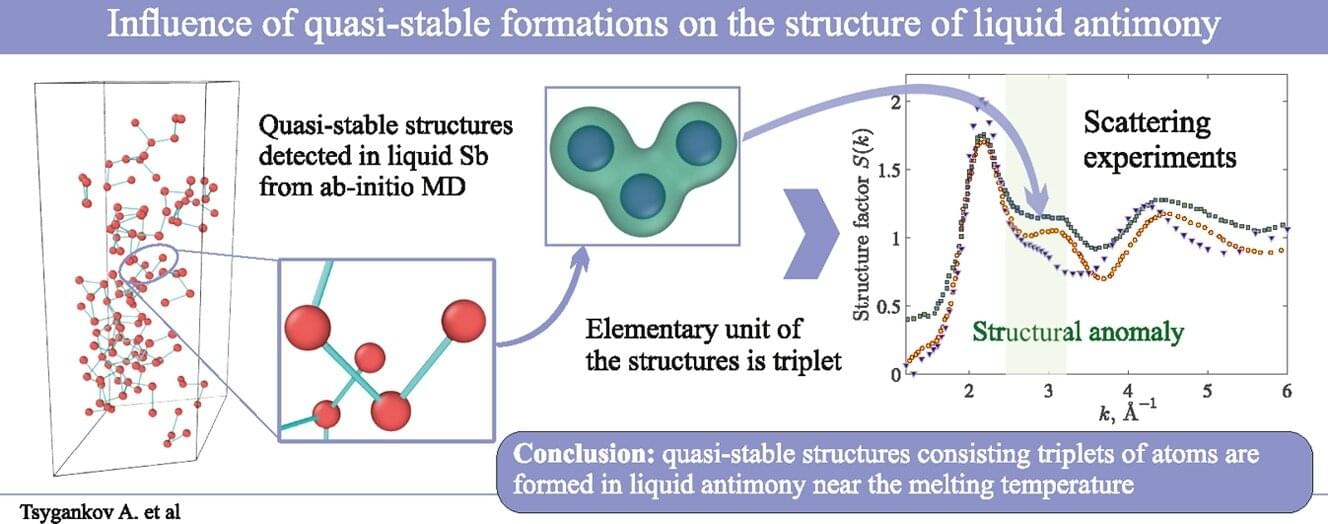Antimony is widely used in the production of materials for electronics, as well as metal alloys resistant to corrosion and high temperatures.
“Antimony melt is interesting because near the melting point, the atoms in this melt can form bound structures in the form of compact clusters or extended chains and remain in a bound state for quite a long time. We found out that the basic unit of these structures are linked triplets of adjacent atoms, and the centers of mass of these linked atoms are located at the vertices of right triangles. It is from these triplets that larger structures are formed, the presence of which causes anomalous structural features detected in neutron and X-ray diffraction experiments,” explains Dr. Anatolii Mokshin, study supervisor and Chair of the Department of Computational Physics and Modeling of Physical Processes.
The computer modeling method based on quantum-chemical calculations made it possible to reproduce anomalies in the structure of molten antimony with high accuracy.
